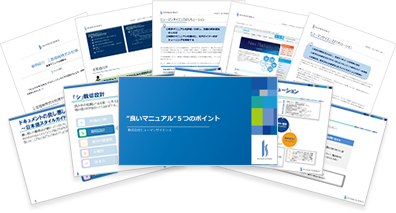
Hello! I am L, a consultant.
I usually handle manual creation and improvement projects for companies in the manufacturing and IT industries. This time, in line with the season of April, I will share stories and tips related to the creation of manuals for new employees that I have encountered and learned in my daily work.
- Table of Contents
1. Should a manual for new employees be prepared?

April marks the start of the new fiscal year. As a company, our expectations for new employees are growing. For those in charge of training, this may be the busiest time of the year for preparing to welcome new hires. Some may feel the pressure to provide high-quality training to develop talent that can thrive in the field...
Additionally, we receive many inquiries from companies saying, "Even though we conduct training every year, it is always burdensome."
If we are going to do it every year, we want to organize the manuals to minimize the burden, right?
By preparing a manual for new employees, the following benefits can be expected.
・Reduced training burden and time
・Reduced burden of responding to inquiries from new employees
・Consistent service quality that is prone to variation
・New employees can learn independently
Additionally, having a manual provides benefits such as allowing new employees to acquire the necessary knowledge and skills for their work, enabling them to resolve uncertainties on their own, and reducing anxiety during the onboarding process.
However, even if manuals are organized, there are times when the expected benefits are not felt.
In fact, we often hear from companies, "We worked hard to create the manual, but the burden on the person in charge hasn't decreased." In such cases, it seems that there are often issues with the approach taken when creating the manual.
So, what is the correct way to create a manual? For those who may not have consciously thought about how to create a manual, I will explain the tips and points for creating manuals primarily for new employees.
2. Create a manual that benefits both parties

1. Set Goals
It is common to all things, but when creating manuals, it is important to first set a goal. I can hear voices saying, "Of course, we set goals," but for those who think that way, have you also set a 'To-Be goal'? Everyone tends to think about a schedule goal like 'we will create it by this date,' but it seems that many do not consider the To-Be goal of 'what we will achieve by creating the manual.'
What is important for the To-Be goal is the perspective of whether it will be beneficial for both parties. The two parties refer to, in the case of new employees and the onboarding manual, the readers of the manual (i.e., the new employees) and the creators of the manual (i.e., the training personnel, and in a broader sense, the company).
Taking the benefits mentioned in "1. Should a manual for new employees be prepared?" as an example, it can be organized as follows.
New Employees: Can acquire the necessary knowledge and skills for work, can learn independently.
Company: Can maintain a consistent service quality that is prone to variation, can reduce the burden and time of training.
While I have listed some general benefits here, what constitutes a benefit for both parties may vary depending on the company. Please keep in mind to set To-Be goals that will be beneficial for both parties for your company.
2. Determine the concept of the manual
Once you have set the goals for the manual, the next step is to determine the concept of the manual.
The concept of the manual refers to questions such as "What kind of people will read the manual, in what situations, for what purposes, and in what tools/formats?" By clarifying the concept, you can concretely envision the new employees who will read the manual, which facilitates the subsequent content review process.
3. Decide on the content
Once the concept of the manual is decided, the next step is to consider the content of the manual. This time, using the training that takes place immediately after joining the company as an example, we will introduce content that is beneficial for both new employees and the company, as recommended by consultants.
●Basic Business Etiquette
Basic business etiquette includes greetings, emails, attire, and manners. Some companies may assume that employees already possess these skills or that they will naturally understand them once assigned to the field, and therefore do not create a manual for them. However, small behaviors and manners can vary in standards from person to person. By formalizing basic business etiquette in a manual, unnecessary mistakes and troubles can be prevented.
●Overview of Operations and Corporate Philosophy
After training, you will be assigned to each department. While you will learn a lot about the individual tasks you are responsible for, there are fewer opportunities to learn about the overall picture of operations and the corporate philosophy. By being aware of what kind of company and department you belong to, as well as your roles and responsibilities, your sense of belonging will increase, and the speed at which you acquire your tasks will also accelerate.
●How to Set Business Goals
New employees often struggle with the question, "How should I set my business goals?" They are not yet familiar with the business or the company. If vague business goals are set, it becomes difficult for the company to properly evaluate the level of achievement. Therefore, it is recommended to compile evaluation criteria and examples of target standards so that new employees can establish specific numerical goals. Additionally, having check items for supervisors to use when reviewing goals can help prevent variations in target standards based on the supervising manager.
●How to Use Tools Used Within the Company
One of the common inquiries from employees is about how to use the tools. In addition to summarizing how to use tools for attendance and various applications, it may also be beneficial to compile instructions for using Word, Excel, PowerPoint, and others. This is not only useful for new employees who may lack literacy in these tools, but it also offers advantages for the company, such as maintaining a certain level of quality and reducing review time for deliverables.
By setting goals that are beneficial for both parties, designing the concept of the manual, and considering the content, we can create a manual that will be utilized more effectively. When the manual is used, new employees can become independent more quickly, and the company can achieve standardization of service quality and reduction of training time. If the workload is reduced, the time available for utilization may increase, allowing for initiatives to improve service quality and training quality.
3. Manual Creation, Pay Attention Here!

Once you create a manual, do you think it's just a matter of distributing it to new employees and that's it? Many companies actually experience challenges after distributing the manual. In particular, we often hear the concern, "I thought I included all the necessary information, but for some reason, it's not being used." If the manual you worked hard to create isn't being utilized, all your efforts and resources will have been wasted.
Therefore, I will share three tips for creating manuals that will be used for a long time.
●Overview and Details
As part of the manual's content, simply writing the details of each procedure can make it difficult to see the overall picture and concepts of the work, resulting in a longer time to understand the content. By writing the overview of the work and the series of processes, it becomes clear where each task fits within the overall work and when it should be performed, allowing for smoother acquisition of the work.
Additionally, for items that require judgment based on the situation, clearly state the criteria for judgment so that even new employees can make decisions on their own by reading the manual.
●Get reviews from other employees
After creating the manual, have it reviewed by employees with less work experience to see if there are any unclear parts or additional information that should be included. This can help cover aspects that veteran employees might overlook, allowing for the creation of a manual that better reflects the perspective of new employees.
●Clarify the Location of Manuals
It may seem obvious, but if a manual is created and its location is unclear, it will not be used. Make sure to clearly communicate the storage location of the manuals during orientations and other sessions. Additionally, organizing the content by scenes or categories, such as "Things to Know Before Being Assigned to the Field" and "How to Use Internal Tools," will make it easier to find.
Furthermore, it is also good to provide contact information for the person in charge or the relevant department in case there are any unclear points that the manual does not resolve.
It is also important to make manuals "easy to read." We have introduced points on how to make manuals easier to read in this blog. Please take a look for reference.
https://www.science.co.jp/document_blog/29997/
4. Summary
So far, we have mainly introduced the points and tips for creating manuals for new employees. How did you find it? That said, many of you may find it difficult to allocate time to start creating manuals alongside your main duties.
Human Science has a proven track record of creating numerous manuals since 1985. We are truly a professional group in the field of business manual creation. We can provide consistent support from organizing current issues to formulating improvement policies and creating customized manuals. If you have any difficulties in creating business manuals, please feel free to consult us.
https://www.science.co.jp/document/index.html
Feature 1: Extensive Manual Production Experience with Large and Global Companies
Human Science has a track record of producing manuals for 243 companies and 3,148 projects, primarily in the manufacturing and IT industries. We have had renowned companies such as "Docomo Technology Inc.", "Yahoo Inc.", and "Yamaha Corporation" as our clients.
Feature ②: Research and Analysis by Experienced Consultants - Output
The creation of business manuals is handled by our experienced consultants at Human Science. Our skilled consultants will propose clearer business manuals based on their extensive experience and the materials provided. Additionally, it is possible to create manuals even from the initial stages without any materials. The assigned consultant will conduct interviews and carry out the manual creation.
Feature ③: Not only creating manuals, but also providing support for implementation
Human Science is responsible for the important phase of "implementation" after manual creation. For example, even after the manual is created, we will conduct updates and hold manual creation seminars. By implementing various measures, we approach the goal of ensuring that the manuals are established in the field.
Thank you for reading until the end.
I hope this blog serves as a helpful hint for creating easy-to-read manuals.
Tips for Creating and Establishing Business Manuals
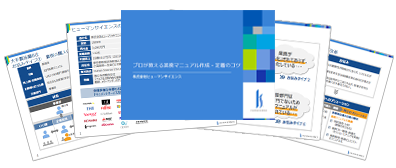
Related Services
- Services
- Business Manual Creation Services
- Services
- User Manual Creation Service
- Services
- Video Manual Creation Service
- Services
- Manual Translation Services




























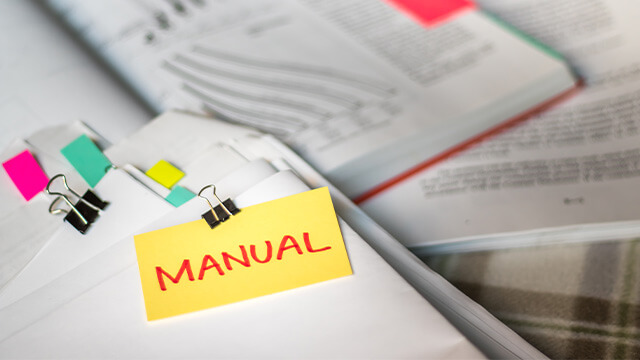






















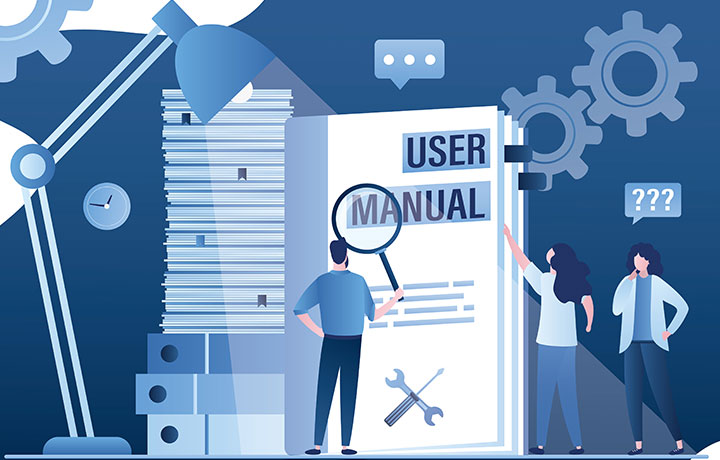



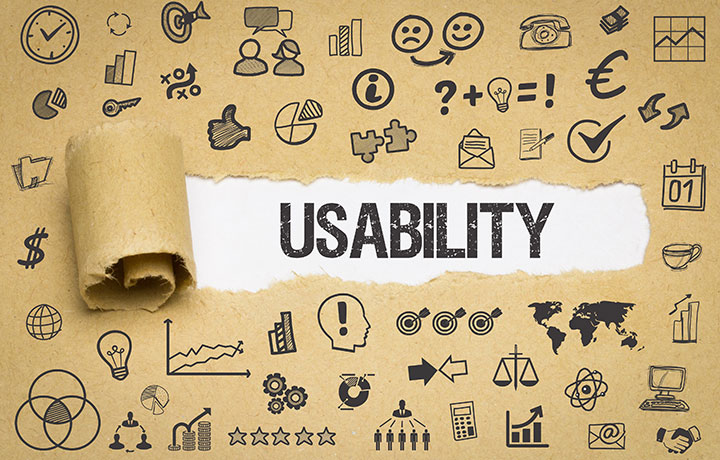



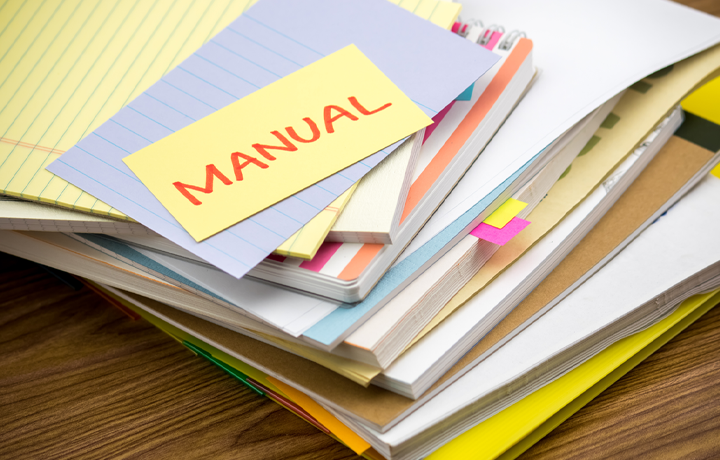

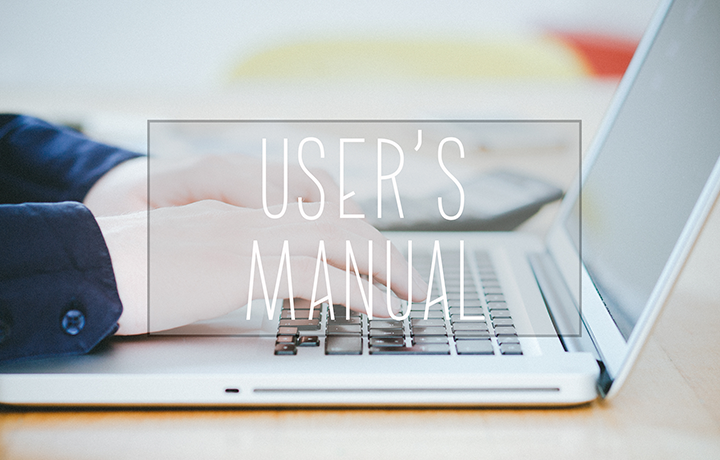












 Manual creation
Manual creation Director, Writer
Director, Writer In-house Support
In-house Support Video
Video Manual
Manual Manual Creation
Manual Creation One-Stop Service for Manual Creation
One-Stop Service for Manual Creation Manuals and Documents
Manuals and Documents